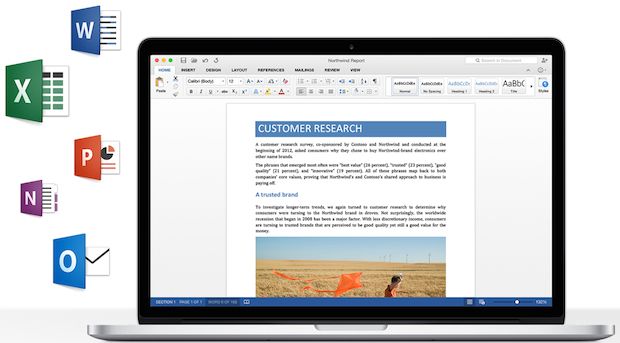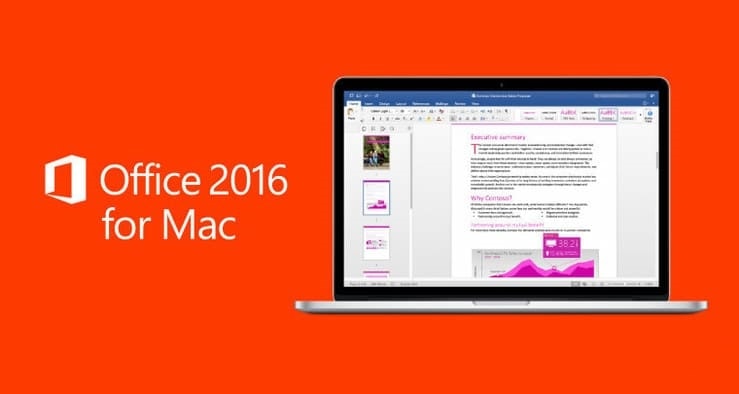Microsoft Suite For Mac
Office Suite Software 2021 Microsoft Word 2019 2020 2016 2013 2010 2007 365 Compatible CD Powered by Apache OpenOffice for PC Windows 10 8.1 8 7 Vista XP 32 64 Bit & Mac OS X - No Yearly Subscription by PixelClassics. Update Office for Mac automatically. Excel for Microsoft 365 for Mac. Word for Microsoft 365 for Mac Outlook for Microsoft 365 for Mac PowerPoint for Microsoft 365 for Mac Office 2019 for Mac Excel 2019 for Mac OneNote for Mac PowerPoint 2019 for Mac Word 2019 for Mac Office for business Microsoft 365 for home Office 365 Small Business Excel 2016 for Mac Outlook 2016 for Mac PowerPoint 2016 for Mac Word 2016 for Mac Office 2016 for Mac Word for Mac 2011 Excel for Mac 2011 Outlook for Mac. Cloud Computin' – AI and Cloud Computing Insights and Projects. Log into your account.
-->This app type makes it easy for you to assign Microsoft 365 apps to macOS devices. By using this app type, you can install Word, Excel, PowerPoint, Outlook, OneNote, Teams, and OneDrive. To help keep the apps more secure and up to date, the apps come with Microsoft AutoUpdate (MAU). The apps that you want are displayed as one app in the list of apps in the Intune console.
Note
Other versions of Office for Mac can be added to the Microsoft Endpoint Manager admin center. For more information, see Most current packages for Office for Mac.
Microsoft Office 365 ProPlus has been renamed to Microsoft 365 Apps for enterprise. In our documentation, we'll commonly refer to it as Microsoft 365 Apps.
Before you start
Microsoft Suite For Macbook Pro
Before you begin adding Microsoft 365 apps to macOS devices, understand the following details:
- Devices to which you deploy these apps must be running macOS 10.14 or later.
- If any Office apps are open when Intune installs the app suite, users might lose data from unsaved files.
Select Microsoft 365 Apps
- Sign in to the Microsoft Endpoint Manager admin center.
- Select Apps > All apps > Add.
- Select macOS in the Microsoft 365 Apps section of the Select app type pane.
- Click Select. The Add Microsoft 365 Apps steps are displayed.
Step 1 - App suite information
In this step, you provide information about the app suite. This information helps you to identify the app suite in Intune, and it helps users to find the app suite in the company portal.
- In the App suite information page, you can confirm or modify the default values:
- Suite Name: Enter the name of the app suite as it is displayed in the company portal. Make sure that all suite names that you use are unique. If the same app suite name exists twice, only one of the apps is displayed to users in the company portal.
- Suite Description: Enter a description for the app suite. For example, you could list the apps you've selected to include.
- Publisher: Microsoft appears as the publisher.
- Category: Optionally, select one or more of the built-in app categories or a category that you created. This setting makes it easier for users to find the app suite when they browse the company portal.
- Show this as a featured app in the Company Portal: Select this option to display the app suite prominently on the main page of the company portal when users browse for apps.
- Information URL: Optionally, enter the URL of a website that contains information about this app. The URL is displayed to users in the company portal.
- Privacy URL: Optionally, enter the URL of a website that contains privacy information for this app. The URL is displayed to users in the company portal.
- Developer: Microsoft appears as the developer.
- Owner: Microsoft appears as the owner.
- Notes: Enter any notes that you want to associate with this app.
- Logo: The Microsoft 365 Apps logo is displayed with the app when users browse the company portal.
- Click Next to display the Scope tags page.
Step 2 - Select scope tags (optional)
/cdn.vox-cdn.com/uploads/chorus_image/image/62924123/officemac.1548351503.jpg)
You can use scope tags to determine who can see client app information in Intune. For full details about scope tags, see Use role-based access control and scope tags for distributed IT.
- Click Select scope tags to optionally add scope tags for the app suite.
- Click Next to display the Assignments page.
Step 3 - Assignments
Select the Required or Available for enrolled devices group assignments for the app suite. For more information, see Add groups to organize users and devices and Assign apps to groups with Microsoft Intune.
Note
You cannot uninstall the 'Microsoft 365 apps for macOS' app suite through Intune.
Click Next to display the Review + create page.
Step 4 - Review + create
Review the values and settings you entered for the app suite.
When you are done, click Create to add the app to Intune.
The Overview blade is displayed. The suite appears in the list of apps as a single entry.
Next steps
- To learn about adding Microsoft 365 apps to Windows 10 devices, see Assign Microsoft 365 Apps to Windows 10 devices with Microsoft Intune.
- To learn about including and excluding app assignments from groups of users, see Include and exclude app assignments.
Office is back and revamped
Enjoy the classic Office Suite for Mac. It’s got some new features and enhancements and remains ahead of its competition.
An updated productivity bundle

Create, edit and design with this new and improved suite from Microsoft, designed for Mac.
Shape your professional life with Microsoft Office’s Suite for Mac. They gave it some subtle tweaks, so it remains easy to use and accessible. You can rely on their package for all your personal and work-related needs.
Enrich your word-processing experience with Word. It’s got a fresh feel to it and is versatile for all uses. Keep yourself on track with Focus. This new feature eliminates any distractions and enables you to read the document easily. Add a professional touch with a digital signature, which has an improved stylus option.
Over in the PowerPoint package, there’s a whole range of new or updated features. The signature options have improved as well. Get creative with your presentations and add in a zoom feature to move between slides. There’s support for Bluetooth pens so you can design and create projects seamlessly.

Outlook hasn’t had a grand makeover like the other programs in its family package. It continues to be a smart and efficient way of managing your inbox. View your emails, contacts, and calendar in one place.
Sync your contacts and emails to your calendar so that Outlook can fill in commitments for you. Similar to Word, there is a Focus option that delivers the most important emails to a dedicated inbox.
It’s important to note that Office 2019 isn’t bursting with new features. It has subtle changes and one or two upgraded services in each of its programs. This might prove disappointing to some users, but the software has remained loyal to its user base.
It also lacks an iCloud option, which many Mac users are accustomed to. This won’t prove much of an issue to anyone who wants to use the programs on a single computer.
Where can you run this program?
This software runs on any version of Windows and Linux, with this particular software only available on Mac. There are also versions available for Android, iOS and Windows tablets.
Is there a better alternative?
No, you won’t find a better suite for productivity programs. If the lack of cloud syncing bothers you, try Google’s bundle of software offering similar services.
Our take
Microsoft Office 2019 is an impressive program, encapsulating the best productivity tools for a variety of projects. It boasts a range of useful features but doesn’t overdo it with elaborate tools. It lacks cloud support but remains ahead of its competition with its smooth interface.
Should you download it?
Yes. This program is accessible, efficient, and simple to use. It offers thoughtful tools and services and is ideal for professional or home use.

Highs
- Friendly interface
- Innovative tools
- Lifetime subscription
- Upgraded
- Focus tool allows better productivity
/MS-Outlook-for-Mac-57f000a93df78c690f598b0b.jpg)
Lows
- No support for iCloud
- OneNote isn’t included in the package
- Not many updates from the previous version
Office Suites For Mac
Microsoft Office 2019for Mac
Microsoft Suite For Mac Free
2019
